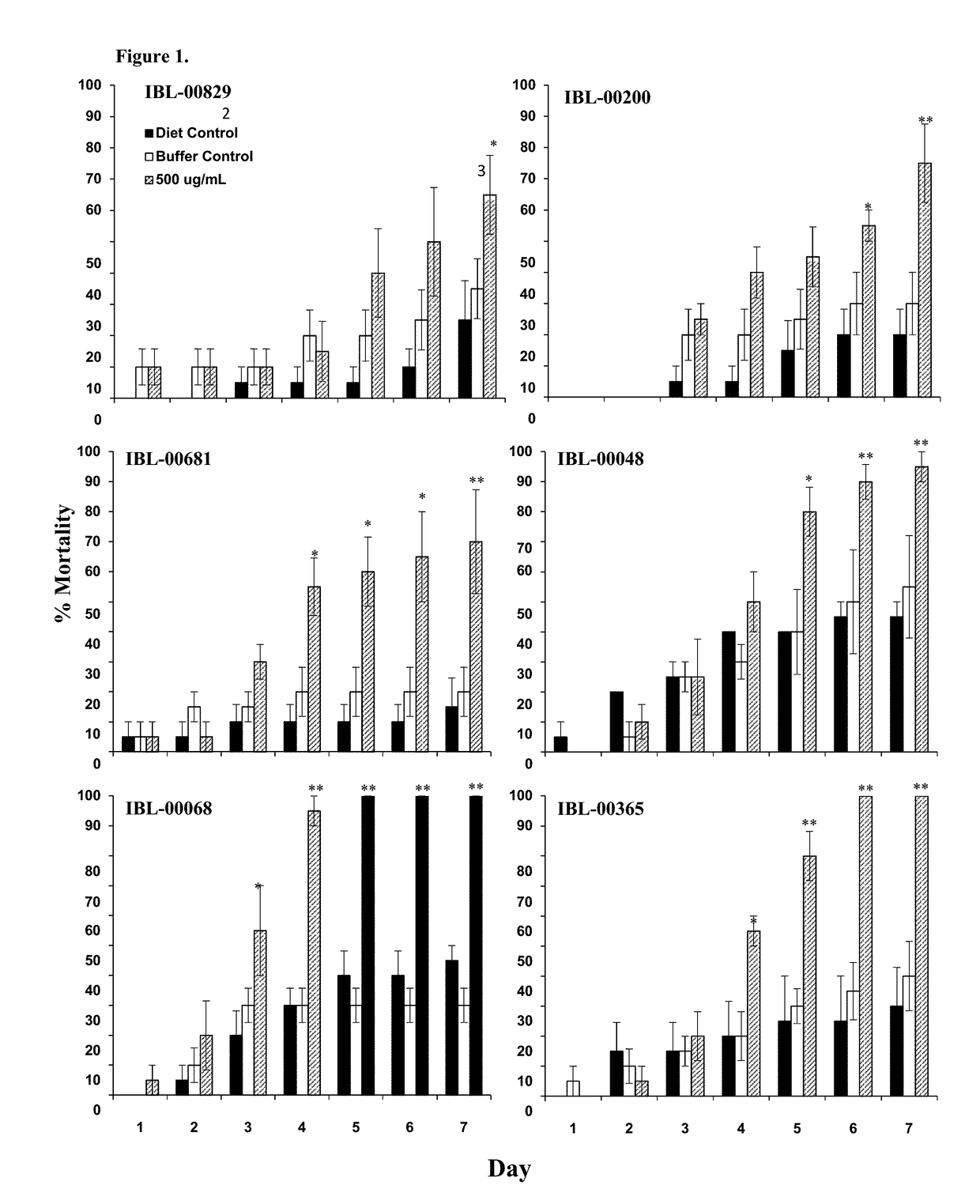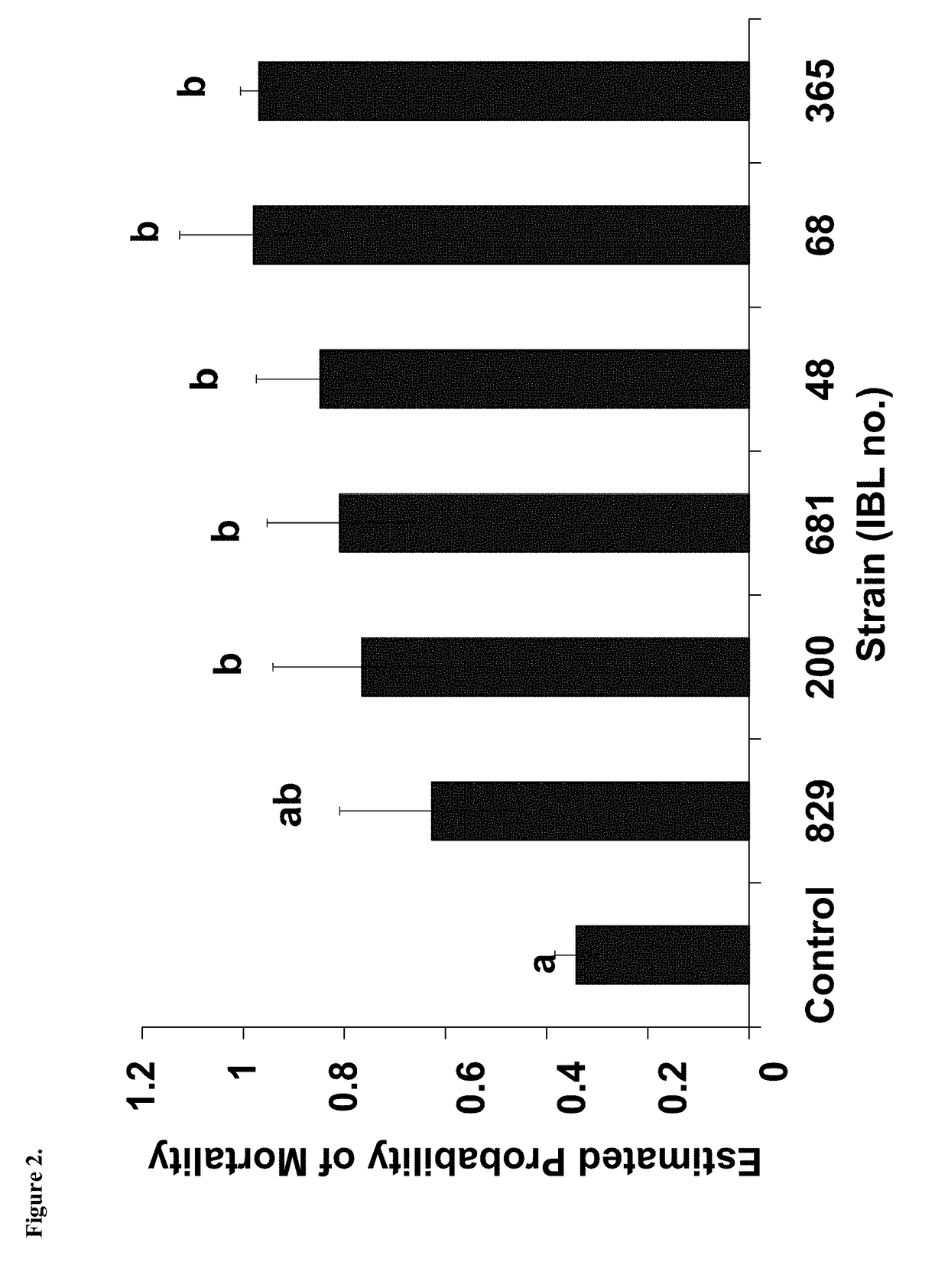Insecticidal toxins for plant resistance to hemiptera
- Summary
- Abstract
- Description
- Claims
- Application Information
AI Technical Summary
Benefits of technology
Problems solved by technology
Method used
Image
Examples
example 1
[0162]Identification of Bacillus thuringiensis Strains and Individual Toxins with Activity Against Asian Citrus Psyllid, Diaphorina citri (Hemiptera)
[0163]In this example, we screened multiple strains of Bacillus thuringiensis (Bt) for toxicity against Asian citrus psyllid (ACP) to provide additional control methods for the ACP vector that causes huanglonging (HLB). Bt produces multiple toxins with activity against a diverse range of insects. Bt δ-endotoxins, which include the crystal (Cry) proteins damage the midgut following ingestion and have been used successfully for management of other insect pests (Shelton et al. 2002; Christou et al. 2006). The Cry proteins are pore-forming toxins, although the mechanism of action is poorly understood (Vachon et al., (2012) J Invertebr Pathol, 111:1-12; Palma et al., (2014) Toxins, 6:3296-3325). While individual Cry toxins are generally toxic to a particular order of insects, collectively they exhibit activity across orders, particularly the...
example 2
[0185]Identification of Asian Citrus Psyllid, Diaphorina citri (Hemiptera) Gut Binding Peptides and Creation of Gut Peptide Binding Peptide Fusion Proteins to Increase Binding of Conjugates to Insect Guts
[0186]In this example, we screened multiple peptides that could bind to the gut of insects, specifically to the gut of the Asian citrus psyllid (ACP). An expression of vector combing these peptides with a linker and a reporter protein was then created and tested to show it bound to ACP gut and that this binding was due to the gut binding peptide.
Insects
[0187]Asian citrus psyllid, ACP (Hemiptera), were obtained from USDA ARS, Fort Pierce, Fla. (Hall et al. (2010); Hall et al. (2015)). Adults (5 to 7 days old) were used for toxicity assays and for BBMV preparation. Psyllids were continuously reared in a greenhouse on Citrus macrophylla Wester, a genotype favored by ACP for colonization (Westbrook et al. (2011)). The colony was maintained as described by Skelley and Hoy (2004) and test...
PUM
| Property | Measurement | Unit |
|---|---|---|
| Fraction | aaaaa | aaaaa |
Abstract
Description
Claims
Application Information
 Login to View More
Login to View More - R&D
- Intellectual Property
- Life Sciences
- Materials
- Tech Scout
- Unparalleled Data Quality
- Higher Quality Content
- 60% Fewer Hallucinations
Browse by: Latest US Patents, China's latest patents, Technical Efficacy Thesaurus, Application Domain, Technology Topic, Popular Technical Reports.
© 2025 PatSnap. All rights reserved.Legal|Privacy policy|Modern Slavery Act Transparency Statement|Sitemap|About US| Contact US: help@patsnap.com



